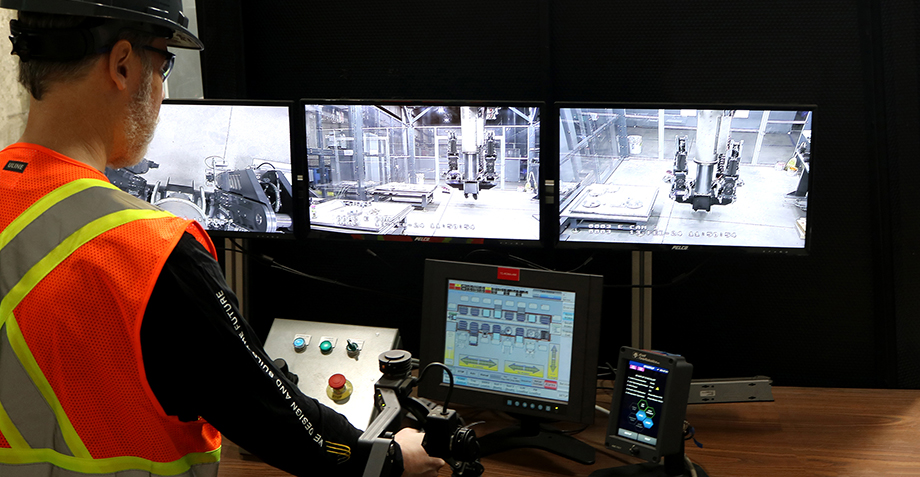
Digital Manufacturing Transformation
You’ve probably heard of the idea of “siloing” in large organizations, and not in a good way. When a company is siloed, it means there are different departments working on projects in parallel, often without communicating with each other, leading to redundant work, poor alignment, and frustrating inefficiencies. Plenty has been written over the years about getting teams to talk to each other, share information, and act as a unified whole. But it’s proven a tough, persistent problem to solve.
In the world of manufacturing automation, with companies poised to make an average investment of $1 billion in manufacturing and supply chain resiliency, there’s another kind of siloing to worry about that has less to do with people and more to do with the information systems that keep production lines moving efficiently. As 78% of companies plan to use multiple manufacturing sites over the next three years, as part of efforts to boost flexibility, responsiveness, and sustainability, the costs when things stop moving can be enormous. It’s estimated that the potential revenue growth left on the table by companies is around $1.6 trillion, when engineering, supply, and production vulnerabilities are exposed by disruptions.
In This Article
- Manufacturing automation suffers from information “siloing” between different systems (SCADA, ERP, MES, etc.)—similar to organizational siloing.
- Fragmented systems from different providers create inefficiencies, data discrepancies, and process mismatches leading to delays and errors.
- Modern integration tools offer the possibility of creating a unified platform that provides exactly the right information at the right time across systems, replacing fragmented interfaces.
- Even though systems integration is a custom process, its return on investment—in reduced downtime, better QC, and more accurate planning—often make it a great investment.
System silos, data discrepancies
Just think about all of the information systems your company or factory uses to manage its processes:
- SCADA to monitor individual PLCs, respond to alarms, and control specific paths
- ERP to keep tabs on your supply chain, procurements, sales flow, and other business systems
- MES to bridge between them, track production, monitor QC, and make sure the plant is operating smoothly as a whole
These systems (and many others) are the digital brains of any automated manufacturing operation, and unfortunately, they’re usually just as siloed as the people who work there. Unless you’ve built your systems up from scratch, chances are they come from a rainbow of different providers, leading to data discrepancies and process mismatches.
All of this can lead to delays in decision-making, redundant effort, lapses in quality, and the occasional avoidable error.
Data and process interoperability is a big part of the problem, but so are the details of how each system operates. Engineers and operators have to be trained on each new system, learning a new interface, new workflows, and sometimes even new terminology. Even if each system works perfectly, it’s at the edges and transitions where mistakes tend to happen.
One platform to rule them all?
In a perfect world, we’d have just one, simple interface: one platform that presents all the information and insight we need to keep things running smoothly, from the annual financial forecast all the way down to the number of screws left in your overworked screw feeder.
This fantasy platform would give you all the information you need for whatever problem needs solving, and nothing more. It would keep tabs on the quality of every adhesive application in battery assembly and the health of next month’s supply chain. And it would do it all in the clearest, most intuitive way, so you can focus on your job, not getting all your systems to talk to each other. A platform like this would offer a whole range of benefits: better QC, less downtime, more accurate production planning… the list goes on.
That platform isn’t a fantasy—but it does require a digital manufacturing transformation that’s specific to your organization, and your production line. “Systems integration” can seem like a vague abstraction, until you’re the one facing multiple competing systems, each with their own data formats and protocols. Getting to a coherent platform that offers that kind of visibility is a custom endeavor, but it’s also one that can save literally millions of dollars a year.
Integrating your systems is a custom process with serious ROI
The good news is that systems integration is a well-developed process these days, with experts who specialize in getting all of the various acronyms within a production line to work together seamlessly. This points to a very near future where the distinction between systems and interfaces starts to blur and fade, and allows many previously labor-intensive tasks to be automated and optimized.
The bad news is that, because it’s a custom process, integration is still often seen as a “nice to have” rather than a “need to have”. Systems like SCADA and MES are necessary to keep your production line running, and the language around them is familiar; integrating them can feel like a bigger step that’s harder to justify.
But given the dramatic improvements in efficiency, reductions in downtime and quality problems, and increased planning accuracy it enables, it’s more accurately described as the foundation of any digital manufacturing transformation. For many production lines facing increased competition and emerging technologies that seem to shift every week or two, systems integration may just be the safest bet in the industry.


